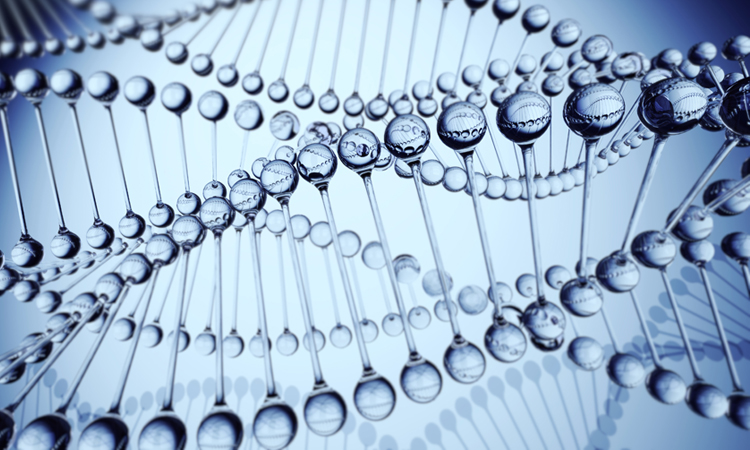
Many of us assume our genetic destiny is set in stone. Whether it’s cancer, diabetes, cardiovascular disease, or another medical condition that runs in our family, we believe there is nothing we can do but simply wait for the inevitable diagnosis. But, according to Mitchell Gaynor, MD, this is not the case. The lifestyle choices we make can, in fact, have more influence on our health than our genetic makeup.
Dr. Gaynor explains that just because we carry a certain genetic code, it doesn’t automatically mean we are destined to develop that condition. That only occurs when the genes are expressed, and we have some control over that. Our genes are greatly impacted by what we eat and drink, how often we exercise, and many other daily habits.
In his new book, The Gene Therapy Plan: Taking Control of Your Genetic Destiny with Diet and Lifestyle, Dr. Gaynor offers a comprehensive, accessible approach to transform our health using the science of epigenetics (the science of factors that influence gene expression). In this excerpt, he outlines the first of four concepts that you can apply to your life today:
Concept 1: The Rule of One-Thirds
Flying in the face of the high-protein, low-carb, reduced-fat orthodoxy that has dominated dietary thinking for more than a generation, my Basic Plan suggests that you consume roughly one-third of your calories from each of the three major macronutrient groups of fats, carbs, and proteins. According to the latest science, there is simply no rationale for any one group of nutrients to be favored or marginalized.
After all, human beings evolved eating a remarkable mixture of foods, often available at different times in different quantities and proportions. And the effects of many foods are synergistic, while the effects of many others are still unknown. Artificially skewing the slate in one direction or another can rob us, in ways that aren’t immediately apparent, of beneficial interactions between various elements.
An even distribution of nutrients allows you to benefit from the good qualities of each while avoiding the pitfalls of overdependence on any one thing. Too many carbs can lead to insulin insensitivity and inflammation. Too much fat deprives you of necessary fiber and phytochemicals. Too much protein is likely to be high in saturated fat, and in any case eating a high-protein diet is extremely difficult to maintain for long as it eliminates whole groups of foods that one’s body needs and craves over time such as whole grains, fruits, vegetables, and dairy. The high-protein, low-carbohydrate diet is actually a high-fat, low-carbohydrate diet that often contains 55 percent to 60 percent of calories from fat, especially saturated fat.
People are not obese because they consume carbohydrates. They are obese because they consume too many of the wrong types of carbohydrates, just as eating too many of the wrong fats or proteins can cause the body to lose calcium and become deficient in carotenoids, critical nutrients like tocotrienols, vitamin B6, magnesium, and fiber.
Solid research supports the idea that breaking macronutrients roughly into thirds is a healthy foundation for eating, and can liberate the way you think about food. Again, there is no need to be obsessive about maintaining a precise balance every day or with every meal. Let common sense be your guide. For instance, if you have pizza for dinner on Monday, don’t continue the carbohydrate theme on Tuesday by having pancakes for breakfast.
To see more deeply into the rationale for the Rule of One-Thirds, let’s look at each of these three food categories in turn.
Fats
Fats have gotten a bad rap in recent popular nutrition. In the 1980s, even the standard-bearing USDA zeroed in on fat as a public menace. In a context of rising obesity, some of this is understandable: fats are nutrient dense (they have 9 calories per gram, as opposed to the 4 calories per gram of carbohydrate and protein), so any diet that simply wants to maximize weight loss, and equates weight loss with fewer calories, will tend to limit fat. But as with everything else, the true picture is more complicated, which in this case means there are good fats and bad fats, depending on your goals.
Carbs
If anything, carbohydrates have been even more vilified recently than fats. “Low carb” has become almost as common an advertising ploy as “low fat.” Store shelves are filled with “low-carb” snacks and treats, all purporting risk-less and convenient satisfaction. Look out! If the big, processed food companies are telling you that a food sounds too good to be true, it almost certainly is. Most prepackaged synthetic foods are the result of exactly those dubious chemical processes that, for the sake of your genome, you want to avoid.
Proteins
Americans typically get around 15 percent of their calories from protein, mainly from meat and milk products. These, as we’ve already discussed, are high in saturated fat, so the goal of one-third protein will require eating not only more protein, but ideally protein that is more nutritious. As with fat, one very good reason to eat more protein is simply to substitute it for excessive carbs.
There is some evidence that eating higher than typical—though not extremely high—levels of protein has a number of independent beneficial effects. Some studies have suggested that protein can protect against heart disease. The protein-based diet in the OmniHeart study lowered LDL cholesterol further than the carbohydrate-rich diet did, and it scored better on some lipid markers than the fat-substituting version of the diet.

Rose Caiola
Inspired. Rewired.
Excerpted with permission from The Gene Therapy Plan by Mitchell L. Gaynor, M.D., published on April 21, 2015 by Viking, an imprint of Penguin Publishing Group, a division of Penguin Random House LLC. Copyright Mitchell L. Gaynor, M.D., 2015.
Click here to find out more about Rose’s thoughts on wellbeing and health

